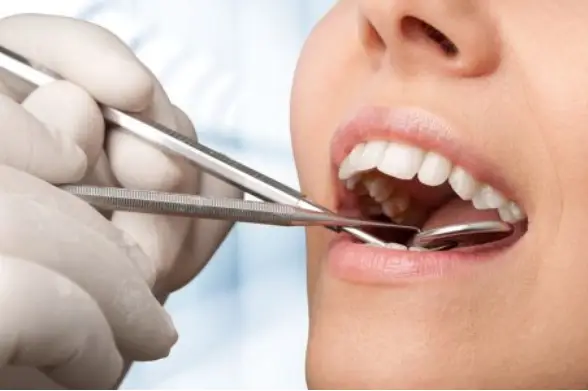
Your teeth were never intended to be completely white. They are usually light yellow to light yellowish white in colour. However, as you get older, your teeth tend to darken even more. Surface enamel breaks and erodes with time, exposing the dentin, the tooth's less dense interior, which absorbs food colour. Stains cling to plaque and tartar deposits on and between teeth, gaining a foothold in fissures. Antibiotics, coffee and tea, and other foods can all discolour teeth. The good news is that many common teeth stains can usually be removed without the need for expert cleaning.
Brushing your teeth after eating is the best approach to avoid discolouration. Brushing is a manual approach to removing the food's acids or other staining characteristics, while toothpaste adds whitening and cleaning power to the brush. You can also try using a good whitening toothpaste. Flossing helps to reduce potential discolouration by eliminating plaque between the teeth.
Many of the items we eat on a daily basis can discolour our teeth over time. Coffee, green tea, dark berries, and other foods that stain teeth should be avoided as much as possible. All of these foods and beverages have characteristics that can wear away at your tooth enamel and cause stains. If you can't avoid them entirely, eat them less frequently. The amount of acid, tannins, and pigments in contact with your teeth will reduce as a result.
Before eating tooth-staining foods like tomato sauce, consume salads or dark green veggies like broccoli. As you chew, crunchy, water-rich foods like celery, apples, and carrots stimulate saliva production, which helps neutralize acids that could break down your tooth enamel and make your teeth less vulnerable to stains. They will also apply a protective coating to your teeth, which will help prevent stains from foods.
Water can help remove some of the stains before it sets in. Another approach is to rinse your mouth with water within half an hour of eating or drinking these stain-causing foods and beverages, giving them less time to cause harm. This is especially important after drinking acidic or staining beverages such as lemonade, coffee, or red wine.
If you find it difficult to eliminate liquids like iced coffee and tea from your diet, use a straw to drink them. Drinking through a straw sends the liquid past your teeth, avoiding much contact with them, especially those that are visible when you smile. To avoid your drink from hitting the outsides of your teeth, place the straw at least halfway inside your mouth.
Plaque, a hard, white substance that grows on your teeth, generates a sticky film on which stains tend to adhere. Professional cleaning and polishing should be scheduled with your dentist at least twice a year. Cleaning your teeth on a regular basis will help to keep them white, and polishing them will smooth out any fine cracks in your teeth, reducing the possibility of staining.